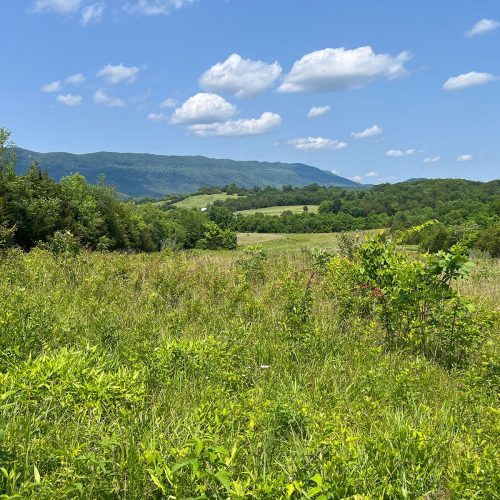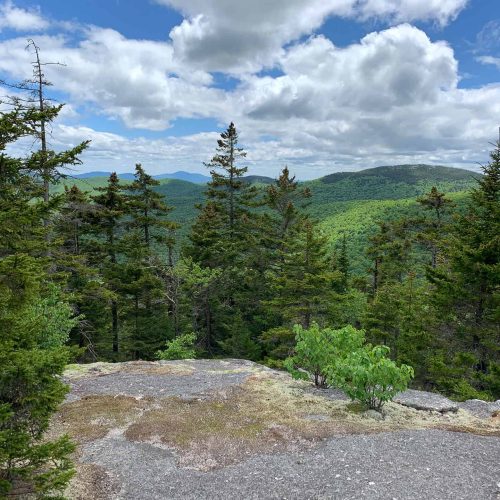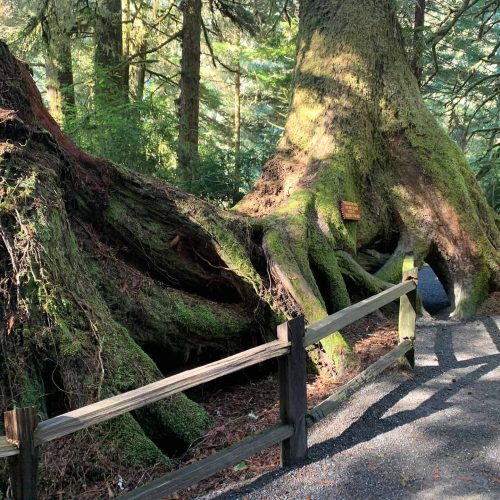So, in all the time that I’ve been here in Port Orford, I never took a tour of the lighthouse or the Huges House located in the state park. It took the visit of a vacationing friend to get me inside! Here’s a bit of information about it:
Cape Blanco Lighthouse is the oldest standing lighthouse on the Oregon coast. It’s managed by the Bureau of Land Management and tickets are only $2 per person. There’s only room for 4 at a time in the tower so it’s best to go mid week and it’s open from April through October.
“Cape Blanco Light Station was built on 47.7 acres of land. A two-family dwelling was built for keepers’ quarters, with fireplaces in each room for heat. Several small buildings were constructed to house oil and other necessities. Most materials used for construction were shipped in, however, the bricks were made locally. Lt. Col. R.S. Williamson was the engineer of record; he rejected nearly 20,000 of the 200,000 bricks as inferior. Finally, the light station was completed and H. Burnap was hired as the first Keeper. On the eve of December 20, 1870, the Fresnel lens was lit for the first time.
This isolated lighthouse holds at least four Oregon records: it is the oldest continuously operating light, the most westerly, it has the highest focal plane above the sea, (256 feet), and Oregon’s first woman keeper, Mabel E. Bretherton signed on in March 1903.
Cape Blanco’s history is full of shipwrecks and lives saved. One notable shipwreck was the “J.A. Chanslor” (an oil tanker) in 1919. Of the 39 passengers, only 3 survived the collision with an offshore rock.
James Langlois and James Hughes were Cape Blanco’s most distinguished keepers. (Hughes was the second son of Patrick and Jane Hughes, whose 2,000-acre ranch bordered the Light Station property.) They both served their entire careers at Cape Blanco, Langlois 42 years and Hughes 33 years. The keeper job included keeping the light working from sunset to sunrise.
Langlois, Hughes and many other keepers for the Light-House Service diligently kept the lamps burning, and the huge Fresnel lens polished until the U.S. Coast Guard took over in 1939. The station was later automated and abandon in 1979. The last known “keeper,” stationed at Cape Blanco for grounds keeping and security purposes, left in December of 1987.
The original lens was a first order, fixed, Fresnel lens (non-rotating). The lens probably had drum shaped panels to provide the steady beam of light that was Cape Blanco’s original signal.
Light lists were published so mariners could identify the lights and their signals. Sometime after the 1911 Light List was published, Cape Blanco’s signal changed. The new signal provided flashes of light, instead of a steady beam. The change was accomplished by using a clockwork system that lowered a shield around the light source at intervals to provide the flash (possibly the shield revolved around). This change added “winding clockworks” to the keepers’ list of duties.
In early 1936, the lighthouse was electrified and the actual lens was replaced with an eight side, rotating lens, built in France by Henry-LePaute. The new lens coupled with the speed as it turned, provided a flash of light every 20 seconds.
The second lens is listed on various light lists as both a first and a second order lens, “orders” being a size classification. Cape Blanco’s lens measures 4’8″ in diameter and 6’8″ in height. It is larger than a second order (4’7″ by 6’1″) lens, but smaller than a first order (6’1″ by 7’10″) lens. We do not know what happened to the original lens after it was shipped to the Tongue Point (Astoria) depot by way of the steamer “Manzanita.”
A 1,000-watt incandescent bulb replaces Cape Blanco’s soot producing oil lamps of old. Gone are the keepers who spent hours polishing the magnificent lens and winding the clockworks. Today, it rotates with the help of a 120-volt, 75-rpm electric motor, specially manufactured for lighthouse duty. The electrified light flashes it’s 320,000 candlepower beam, 1.8 seconds bright (flash) every 18.2 seconds.”
The Hughes House
Patrick Hughes was born in County Tyrone, Ireland in 1830. He came to America about 1850. In Boston, Massachusetts, he met and married Jane O’Neill, also from County Tyrone.
It isn’t exactly clear when they came west. There are two major stories, one has them coming west by the Isthmus of Panama and another has them coming by land. From that point: some say Patrick came west first, looking for gold and Jane followed later. Some say Patrick left Jane in San Francisco while he traveled north as far as the Fraser River in Canada looking for gold. There’s no doubt that he eventually they arrived in Deady, Oregon (north of Roseburg), as they are recorded in the 1860 Federal Census. Patrick’s next move was to the Sixes River, where established what was to become a large ranch.
Patrick was a progressive and prosperous dairyman. He built his ranch from the original acreage to nearly 2,000 acres, employing as many as 14 ranch hands. From over 100 cows, he produced high quality butter for barter and sale locally as well as in San Francisco. He also sold and traded other ranch products, such as smoked and cured meats, milk, and fish to local markets.








